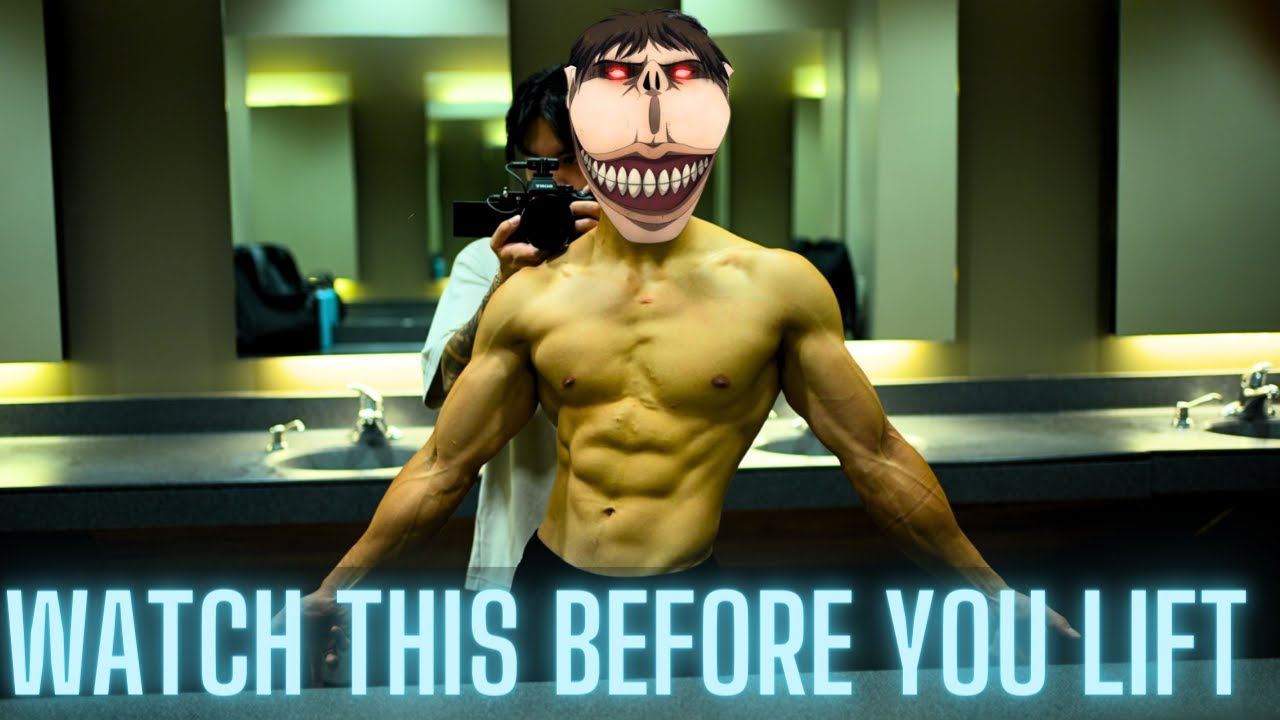This is how you perform your reps for max muscle growth
Summary
TLDRThis video discusses whether focusing on movements or muscles leads to better results in the gym. The presenter challenges the effectiveness of the mind-muscle connection, a popular concept in bodybuilding. While some studies show that focusing on muscles can increase activation, these effects are limited to low intensities and disappear at heavier weights or when lifting explosively. Instead, focusing on performance and technique provides better long-term strength and growth. The video emphasizes using external cues for compound movements and suggests internal cues may be helpful in specific cases, like injury rehabilitation.
Takeaways
- 💪 Mind-muscle connection is popular in bodybuilding but lacks solid scientific backing for strength development.
- 🏋️ Powerlifting focuses more on performance and technique rather than on isolating muscle groups.
- 🧠 Research shows that focusing on a muscle can increase its activation, but only at low intensities (20-50% of 1RM).
- ⚖️ The effect of the mind-muscle connection diminishes as intensity increases, especially at 80% of 1RM and closer to failure.
- 🔗 Focusing on one muscle group during compound exercises can reduce the efficiency of movement and affect other muscle groups negatively.
- 🚫 Internal cues (focusing on a specific muscle) generally reduce performance and strength development in the long term.
- 💡 External cues (focusing on movement and technique) improve both performance during sets and long-term strength development.
- 📉 Only one study has shown that focusing on muscle contraction increased biceps growth, but not for the quads, and this may be a result of better technique.
- 🔄 For compound movements, it's better to focus on good technique rather than isolating a specific muscle for optimal strength and growth.
- ⚕️ Internal cues can be useful for injury rehabilitation or reducing strain while still activating the target muscles effectively.
Q & A
What is the main difference in focus between bodybuilding and powerlifting training?
-In bodybuilding, the focus is on using the mind-muscle connection to target specific muscles for growth, while in powerlifting, the focus is on performance and technique to maximize strength.
What does the term 'mind-muscle connection' mean in the context of bodybuilding?
-The mind-muscle connection refers to consciously focusing on a specific muscle group during exercise to activate it more and potentially enhance its growth.
Does research support the effectiveness of the mind-muscle connection?
-While research shows that focusing on a muscle can increase its activation at lower intensities, the effect diminishes at higher intensities or closer to failure, suggesting limited benefits in real-world training scenarios.
At what percentage of 1RM does the effect of the mind-muscle connection become negligible?
-The mind-muscle connection effect becomes unclear at around 50-60% of 1RM and is almost entirely gone at 80% of 1RM, particularly when performing more demanding sets closer to failure.
How does using internal cues, like focusing on muscles, affect performance in strength training?
-Using internal cues tends to reduce performance by making movements less efficient, lowering force production, and possibly hindering long-term strength development.
What impact does explosive lifting have on the mind-muscle connection?
-The mind-muscle connection is largely ineffective during explosive lifting or heavy weightlifting, as the brain prioritizes movement efficiency over focusing on specific muscles.
Are there differences in the effectiveness of the mind-muscle connection between muscle groups?
-Yes, research shows that the mind-muscle connection may work better for certain muscles like the biceps during isolation exercises, but not for others like the quads in compound movements.
What is a better alternative to internal cues for strength training?
-Focusing on external cues, such as proper technique and lifting as much weight as possible, tends to improve performance, strength development, and efficiency during exercises.
Can using the mind-muscle connection be helpful in certain situations?
-Yes, internal cues can be beneficial during injury rehabilitation or when managing injury risk, as they allow for muscle activation with lighter weights, reducing stress on connective tissues.
What should beginners focus on during training to optimize muscle growth and performance?
-Beginners should focus on good exercise technique and performance-based cues rather than solely relying on the mind-muscle connection, as this approach ensures better long-term results and fewer negative effects on performance.
Outlines

このセクションは有料ユーザー限定です。 アクセスするには、アップグレードをお願いします。
今すぐアップグレードMindmap

このセクションは有料ユーザー限定です。 アクセスするには、アップグレードをお願いします。
今すぐアップグレードKeywords

このセクションは有料ユーザー限定です。 アクセスするには、アップグレードをお願いします。
今すぐアップグレードHighlights

このセクションは有料ユーザー限定です。 アクセスするには、アップグレードをお願いします。
今すぐアップグレードTranscripts

このセクションは有料ユーザー限定です。 アクセスするには、アップグレードをお願いします。
今すぐアップグレード関連動画をさらに表示
5.0 / 5 (0 votes)






